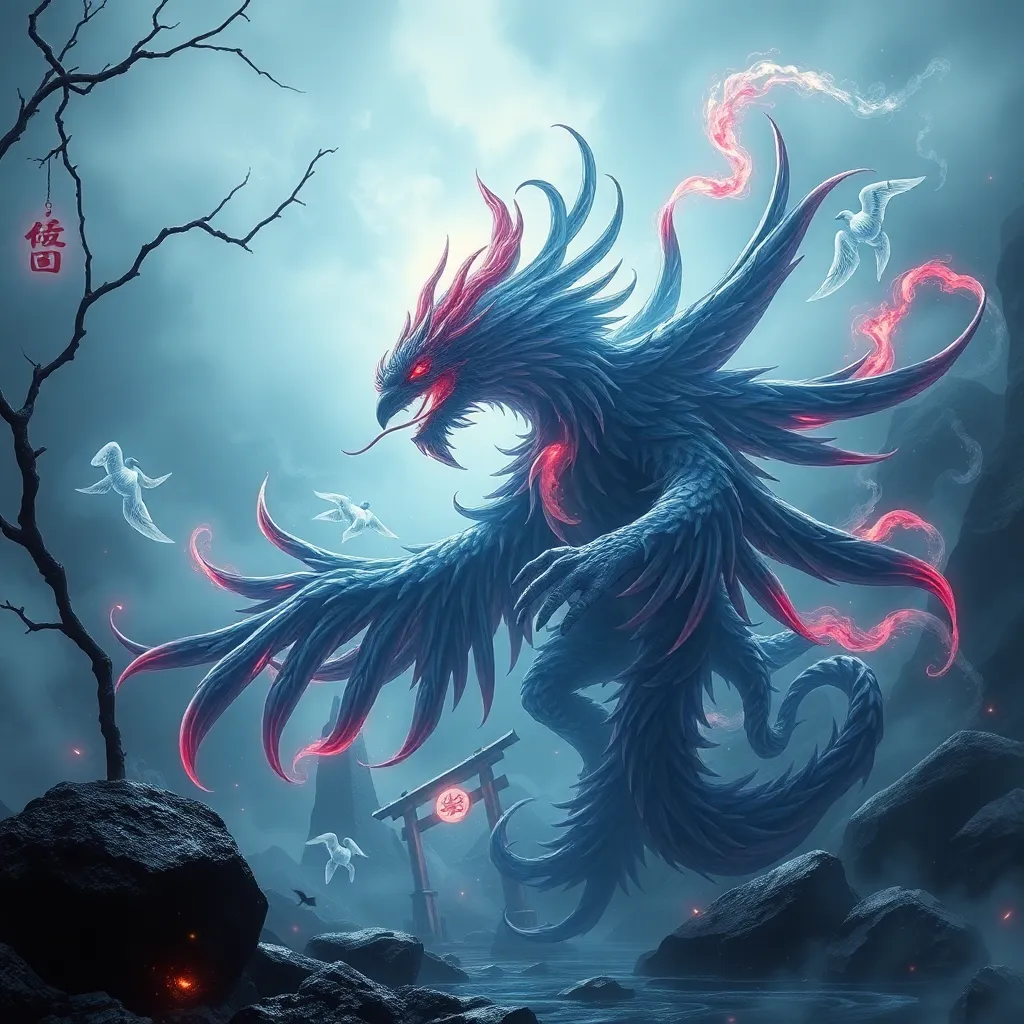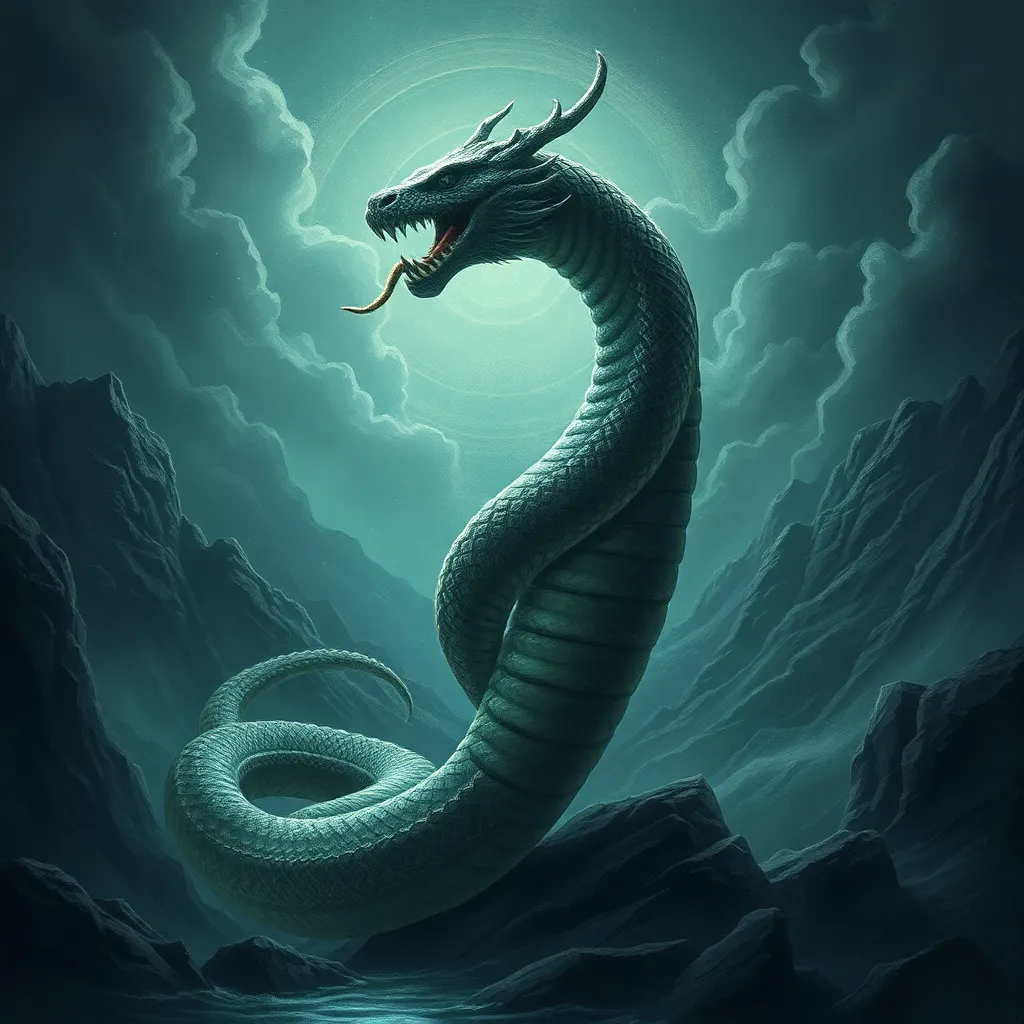The Tengu in Chinese Mythology: Exploring Their Origins and Interpretations
Introduction to Tengu in Chinese Mythology
The Tengu, a fascinating entity in East Asian folklore, holds a significant place in the mythological tapestry of China. Traditionally depicted as bird-like humanoid creatures, Tengu embody both the spirit of nature and the complexities of human nature. They are often seen as protectors of the mountains and forests, yet their dual nature also aligns them with trickery and mischief.
Throughout East Asia, Tengu legends have evolved, shaping cultural beliefs and practices. Their importance transcends mere superstition, influencing art, literature, and even moral teachings. Understanding Tengu provides insight into the cultural consciousness of the regions that revere them.
Historical Origins of Tengu
The origins of Tengu can be traced back to early references in Chinese texts, where they were sometimes referred to as “tiāngǔ” (天狗), literally meaning “heavenly dog.” These early accounts often highlight their connection to nature and celestial phenomena.
- Early References: Tengu are mentioned in historical documents and texts such as the “Shan Hai Jing” (Classic of Mountains and Seas), which describes strange creatures and deities inhabiting the mountains.
- Buddhism and Taoism: The influence of Buddhism introduced the idea of supernatural beings, incorporating Tengu into religious narratives. Taoist practices further enriched the mythology, merging local deities and spirits with the Tengu lore.
In Japan, Tengu evolved into distinct figures with their own set of characteristics and stories, often depicted as skilled warriors or mountain ascetics. The cross-cultural exchange between China and Japan led to a unique interpretation of Tengu, blending elements from both traditions.
Physical Characteristics and Symbolism
In Chinese mythology, Tengu are often depicted with bird-like features, such as feathers, beaks, and sometimes wings. They are typically shown as humanoid figures dressed in traditional robes, blending human and avian characteristics. This duality is significant, representing the connection between the earthly realm and the spiritual world.
The symbolism associated with Tengu extends beyond their appearance:
- Guardians of Nature: Tengu are seen as protectors of sacred spaces, embodying the natural world’s spirit and wisdom.
- Tricksters: Their cleverness and playful nature symbolize the unpredictability of life, teaching important moral lessons about respect and humility.
- Duality of Nature: Tengu represent the balance between good and evil, wisdom and folly, showcasing the complexity of existence.
Tengu as Guardians and Tricksters
Tengu occupy a unique position in folklore as both guardians and tricksters. As protectors, they are believed to watch over sacred sites such as temples and mountains. They safeguard these places from intruders and malevolent spirits, often leading wanderers astray to test their intentions.
Conversely, Tengu are also known for their mischievous behavior:
- Trickster Figures: In many stories, Tengu play tricks on travelers, leading them into confusion or teaching them valuable lessons about humility and respect for nature.
- Moral Implications: The actions of Tengu often carry moral weight, demonstrating that while they may be mischievous, their ultimate goal is to impart wisdom.
Regional Variations of Tengu Legends
Tengu legends vary significantly across different regions of China, influenced by local culture, geography, and historical context. In some areas, Tengu are revered as mountain gods, while in others, they are viewed more skeptically.
- Northern China: In the northern regions, Tengu are often associated with snow-capped mountains and are seen as divine protectors of the land.
- Southern China: In contrast, southern tales may depict Tengu as more mischievous, emphasizing their trickster qualities and interactions with humans.
These regional variations reflect the diversity of Chinese culture, showcasing how local beliefs can shape the interpretation of mythological figures.
Tengu in Art and Literature
The portrayal of Tengu in traditional Chinese art and literature is rich and varied. Artists have depicted Tengu in various forms, from ancient paintings to modern illustrations, often highlighting their unique characteristics and dual nature.
- Traditional Art: Tengu are frequently featured in scroll paintings, often depicted in landscapes or alongside other mythological creatures.
- Literature: Classic tales and folklore include stories of Tengu, emphasizing their roles as guardians and tricksters, enriching the narrative landscape of Chinese literature.
In contemporary media, Tengu continue to inspire filmmakers, writers, and artists, who reinterpret these figures through modern lenses, ensuring their legacy endures.
Comparative Analysis: Tengu in Chinese vs. Japanese Mythology
A comparative analysis reveals key differences and similarities between Chinese and Japanese Tengu folklore. In China, Tengu are primarily seen as protectors and guardians, while in Japan, they have evolved into more complex characters, often portrayed as skilled warriors or hermits.
- Similarities: Both cultures recognize Tengu as beings with dual natures, embodying both wisdom and mischief.
- Differences: The Japanese interpretation often emphasizes martial prowess and spiritual enlightenment, whereas the Chinese focus is more on nature and moral lessons.
This evolution of the Tengu figure across cultures illustrates the dynamic nature of folklore and its capacity to adapt to different societal values and beliefs.
Conclusion: The Enduring Legacy of Tengu in Asian Mythology
The Tengu holds a significant place in Chinese mythology, symbolizing the intricate relationship between humans and the natural world. Their dual nature as both guardians and tricksters reflects broader themes of morality, respect for nature, and the complexity of existence.
As cultural narratives evolve, Tengu continue to resonate in modern contexts, reminding us of the timeless lessons embedded in folklore. Their ongoing influence in art, literature, and popular culture ensures that the legacy of Tengu remains vibrant and relevant, bridging the past with the present.




